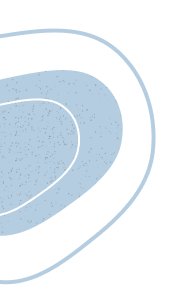Mortgages & Financing
First-Time Homebuyers
How Mortgages Work in Canada: What You Need To Know
Confused about how mortgages work? Here’s everything Canadians need to know before buying their first home.
![]() Loveleen DhimanGrowth Marketing @Pine
Loveleen DhimanGrowth Marketing @Pine
7 min read

Introduction to Mortgages
Buying your first home is a big deal, and yes, it can feel overwhelming. Between rates, terms, amortization, and all the fine print, it’s easy to get lost in the details. But here’s the good news: mortgages don’t have to be scary.
At Pine, we’re here to make homeownership feel less like decoding a finance textbook and more like a confident next step in your life. We’ll walk you through how Canadian mortgages work, from application to closing, the different types you’ll encounter, how interest rates are determined, and practical tips to ensure you choose wisely.
What Exactly Is a Mortgage?
Think of a mortgage as a friendly long-term loan that helps you buy your home. You borrow money from a lender to purchase your property, then pay it back (with interest) over time - usually 25 years. While you’re making payments, the lender technically “holds” the title to your home, but you live in it, build equity, and once it’s fully paid off, it’s all yours.
Types of Mortgages in Canada
When you look at mortgages in Canada, you’ll encounter several key contrasts: fixed-rate vs variable-rate, and open vs closed terms. Let’s unpack them.
Fixed-Rate vs Variable-Rate Mortgages
A fixed-rate mortgage locks in a set interest rate for the term of the mortgage (commonly 3, 5, or 7 years in Canada). Your monthly principal & interest payment remains the same for that term, which gives predictability.
A variable-rate mortgage means the interest rate can change over the term (often tied to prime + spread). As the underlying interest rate environment shifts, your payments or amortization schedule may shift.
In recent years, variable-rate mortgages have been making a comeback in Canada because they can sometimes offer lower effective cost when rates fall. Variable rates tend to be slightly lower than fixed rates at any given time, because they are inherently less risky for lenders in many cases. On the flip side, fixed-rate protects you from interest rate hikes and is simpler to budget for. If you are not comfortable with interest-rate volatility, fixed is likely your best choice.
Open vs Closed Mortgages
A closed mortgage restricts pre-payment, switching or refinancing without penalty (or has heavy penalties). It’s the most common type for standard borrowers in Canada.
An open mortgage allows you to repay, refinance or switch more freely, often at higher interest cost. This can be good for someone who expects to pay off early or sell soon.
If you’re planning to stay in your home for the next few years, closed mortgage usually makes sense. But if you think you might move or refinance soon, open could be the better choice.
Insured vs. Uninsured
If your down payment is less than 20% of the home’s purchase price, you’ll need mortgage default insurance (through Canada Mortgage and Housing Corporation (CMHC) or other insurers). It protects the lender, but also lets you buy a home with as little as 5% down.
The Mortgage Application Process
Whether you’re a first-time homebuyer or refinancing, following the proper steps will reduce stress and help you avoid pitfalls. Here is a typical Canadian mortgage application journey:
Pre-approval / Mortgage qualification: Before you begin house-hunting, getting pre-approved helps: a lender (or broker) checks your credit, income, debt ratios (Gross Debt Service (GDS) / Total Debt Service (TDS)), down payment source, and the property value. You’ll find that for insured mortgages (with <20% down), you must meet more stringent criteria (for example credit score minimums, GDS/TDS ratios) via CMHC insurance rules.
House hunting & making an offer: Once your pre-approval is in hand, you shop for a property within your budget, make an offer, negotiate, and sign a purchase agreement. You’ll also want to keep in mind your pre-approval budget and the total cost of home-ownership (insurance, property taxes, maintenance).
Final mortgage approval / underwriting: After the offer is accepted, your lender finalises the mortgage: verifying appraisal, title search, verifying borrower information, insurance (homeowner’s, possibly mortgage default insurance), and confirming the closing date.
Closing: On closing day you pay the down payment, pay the closing costs (legal fees, land transfer tax, CMHC insurance premium if applicable), sign all mortgage documents and title is transferred. After closing, your repayments begin according to your schedule.
Renewal / refinancing: Most Canadian mortgage terms are shorter than the amortization: commonly 3, 5 or 7-year terms even though amortization is 25 years. At term end you often renegotiate or renew the rate with your lender or switch. This means interest-rate changes mid-life of your loan may directly affect your long-term cost.
Understanding Interest Rates
Interest rates are simply the cost of borrowing money. They’re influenced by the Bank of Canada, the economy, and your personal financial profile (credit score, down payment, etc.).
Here’s what to remember:
Fixed rates = stability and predictable payments.
Variable rates = potential savings when rates drop, but more flexibility required.
Shorter amortization = higher payments but less total interest.
As of October 2025, average Canadian rates hover around 3.75%–3.9%, depending on whether your mortgage is insured or uninsured.
Tips for First-Time Homebuyers
If you’re purchasing your first home (or even your second) in Canada, you’ll want to make informed choices. Here are practical tips (and common mistakes to avoid):
What to consider when choosing a mortgage
Credit Score & Down Payment Matter: A higher credit score gives you access to better terms, especially important if you’re getting an insured mortgage. The minimum down payment in Canada is 5% for homes up to a certain value, but if you put less than 20% down you’ll require mortgage default insurance. Make sure you also budget for closing costs, property taxes, maintenance and, if applicable, homeowners insurance and default insurance premiums.
Understand Terms & Structure: Know your amortization, term, fixed vs variable, open vs closed, pre-payment privileges, penalty clauses. If you anticipate a job change, relocation or early sale, an open mortgage or one with strong prepayment options might serve you better. Avoid signing up for long amortizations (30 years) without appreciating the long-term cost.
Rate Risk & Payment Shock: If you go variable, be comfortable with the risk that rates could rise. Build a buffer in your budget. If you choose fix, remember you may not benefit if rates drop significantly (unless you refinance, and that comes with costs).
Plan for Life Beyond Purchase: Your mortgage will likely be the biggest debt you carry. Budget for things like rising property taxes, condo fees (if applicable), maintenance, and potential rate resets. Consider making extra payments to reduce amortization and interest if your budget allows and check for pre-payment options in your mortgage contract.
Government Programs & Incentives
For Canadian homebuyers, especially first-timers, there are government-led programs and incentives worth knowing.
First-Time Home Buyer Incentive (FTHBI): The government helps fund part of your purchase in exchange for shared equity.
Home Buyers’ Plan (HBP): Withdraw from your RRSP (up to a limit) tax-free to use toward your down payment.
First-Time Home Buyers’ Tax Credit: Claim a non-refundable tax credit to reduce your costs in the year you buy.
Provincial Programs: Ontario, BC, and Alberta offer extra rebates or land transfer tax refunds, check what’s available in your area.
Final Thoughts
Navigating the mortgage landscape in Canada can feel complex but you don’t need to go it alone. At Pine, our mission is to demystify mortgages, empower you as a homebuyer and connect you with the right tools and advice.
Your Next Step
Use our affordability calculator to find out how much house you can afford. See how much your monthly payment could be and find homes that fit your budget.
Start a mortgage application with Pine to lock-in your lowest personalized mortgage and see how much you could save by getting your mortgage with Pine.
At Pine, we’re here to support Canadians through every step of home ownership. You can apply online in just a few minutes. The process is 100% digital, and you’ll be guided by our team of commission-free advisors. Let’s make your home-ownership journey as smooth, informed and confident as possible.










